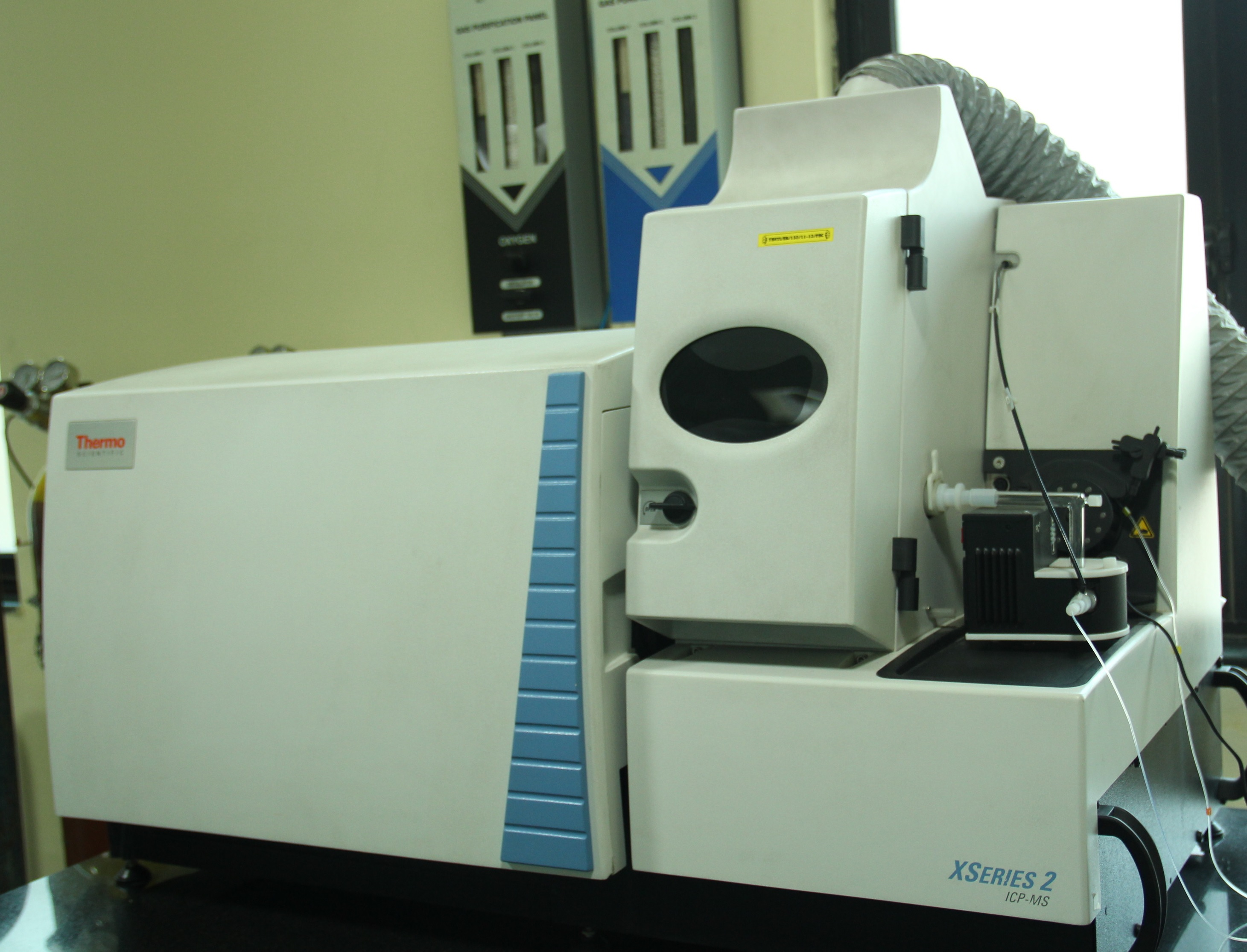Inductively Coupled Plasma Mass Spectrometry (ICP MS)

Model: XSERIES 2, Thermofisher Scientific
Principle
Inductively Coupled Plasma-Mass Spectrometry (ICP-MS) is an important tool used for metal analysis. A sample aerosol is transported into an argon inductively coupled plasma ion source where it is quickly and efficiently desolvated, atomized and ionized. The resulting ions from the ICP are extracted through a series of cones into the mass spectrometer. Transfer optics guides the ions into a cell (CCT) pressurized with a specific gas where potential interferences are efficiently removed via collisional or controlled reactive processes. The ions are then separated in a quadrupole mass spectrometer by the stability of their trajectories in oscillating electric fields to generate a mass-to-charge ratio (m/z) specific to individual isotopes of an element. Finally, a detector receives an ion signal proportional to the concentration of the element in the original sample.
Applications
ICP-MS performs rapid multi-element determinations across the periodic table from sub-parts per billion to parts per million levels. ICP-MS has advantages over Atomic Absorption Spectrometry (AAS) and Inductively Coupled Plasma-Optical Emission Spectrometry (ICP-OES) in detection limits, elemental coverage, and speed of analysis. Diverse application areas include environmental, geochemical, semiconductor, clinical, nuclear, chemical and metallurgical analyses. For example, accurate determination of traces and majors in foodstuffs as well as environmental and geochemical samples, determination of elements (e.g. S) in gasoline, speciation analysis by LC-MS or GC-MS coupling, and isotope ratio analysis. Detection limits < 1 ppt in solution for most elements.
Contact
aef@thsti.res.in
| Equipment Details | Price | ||
|---|---|---|---|
| Government Organisation | Non-Government Organisation | ||
GST: 18% extra on the above charges.
